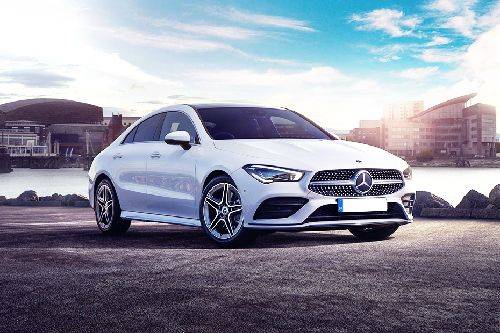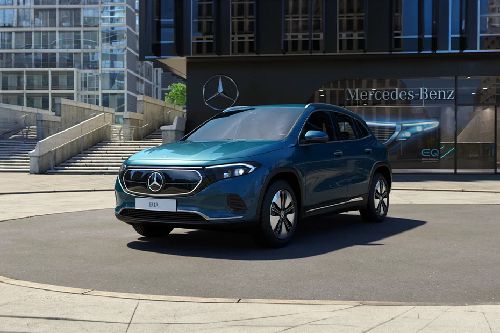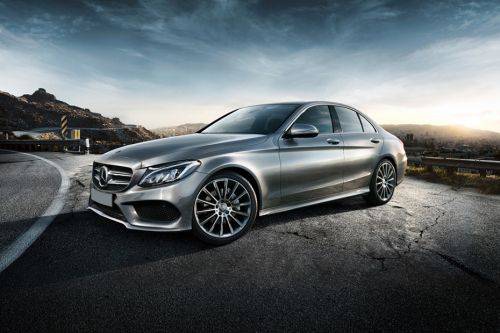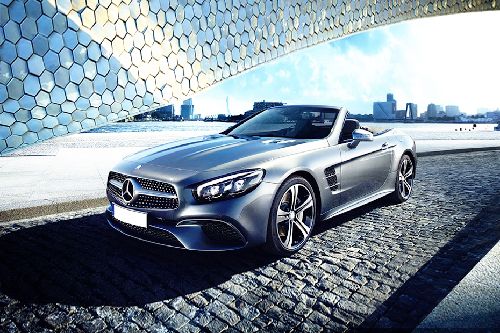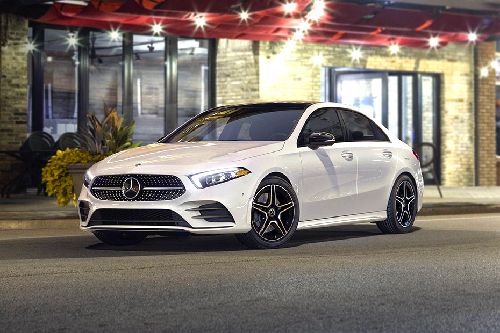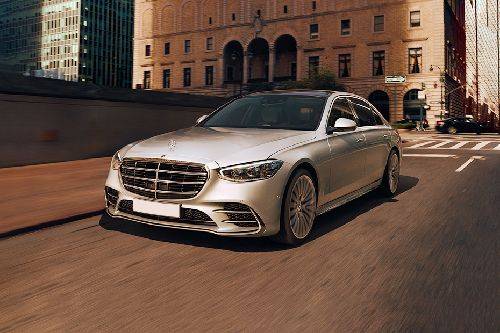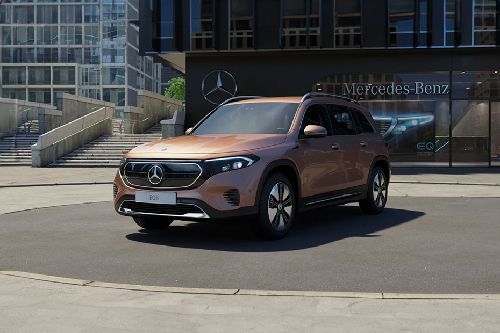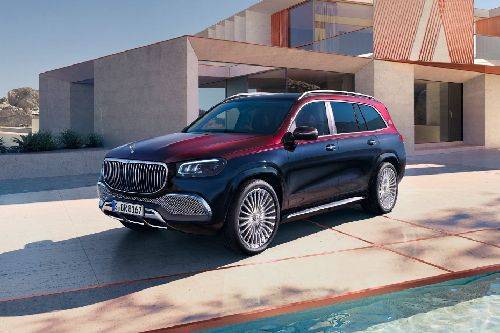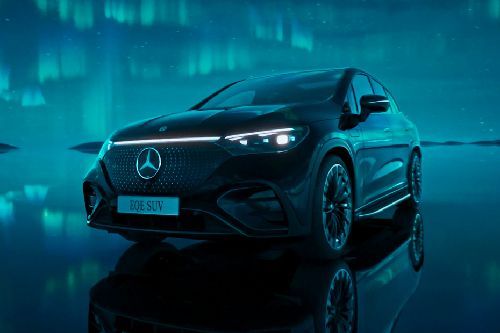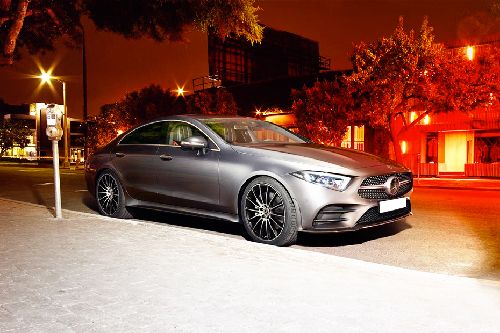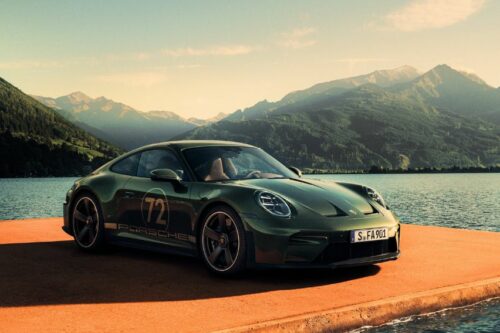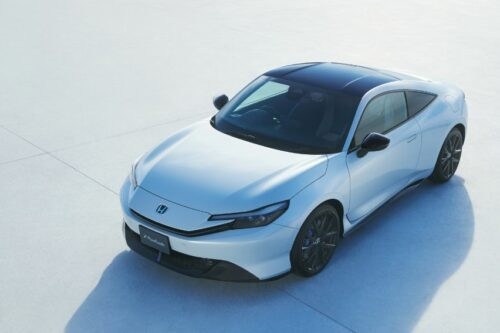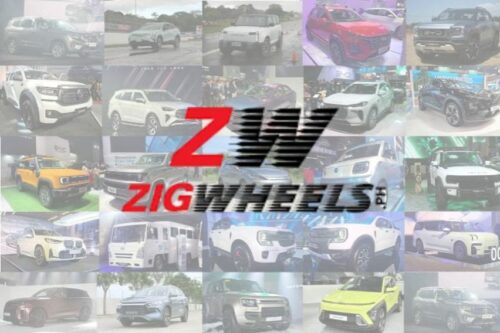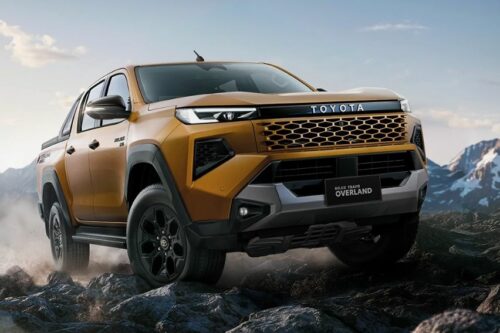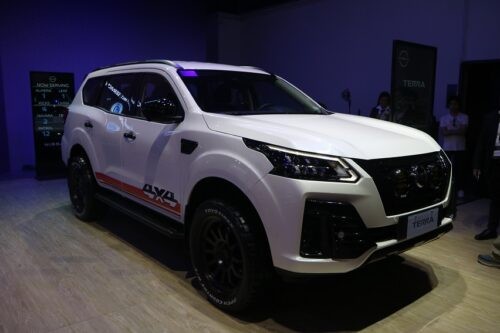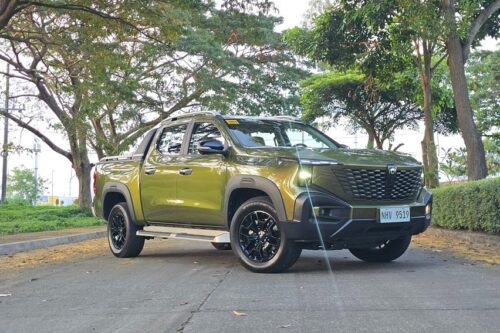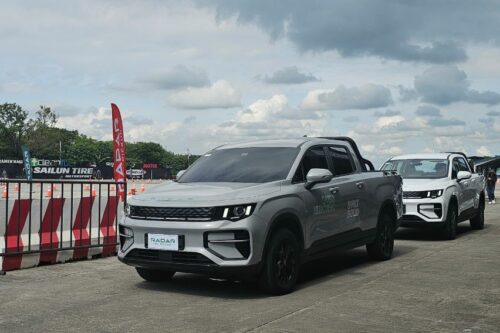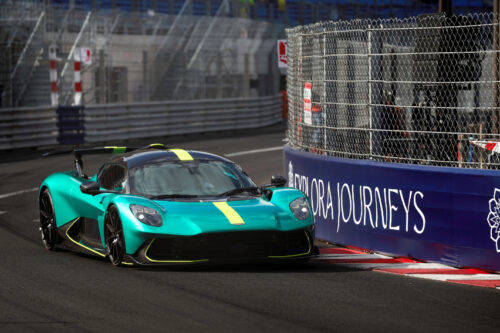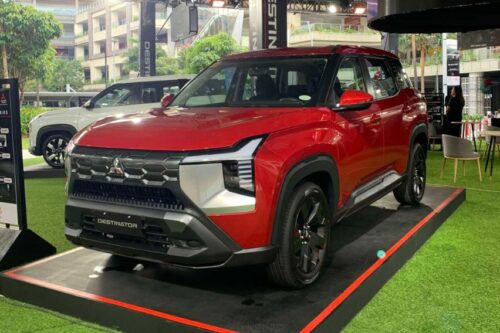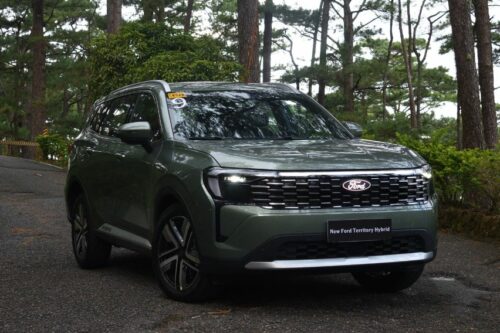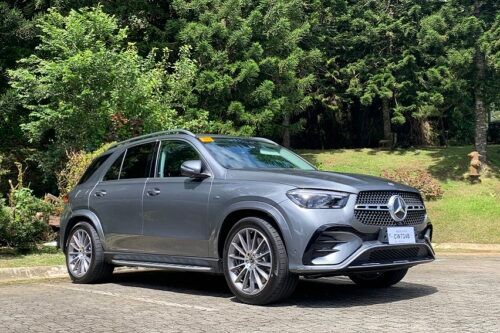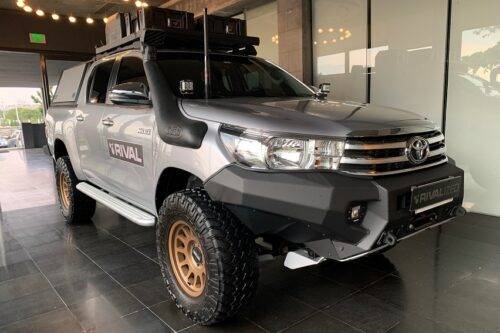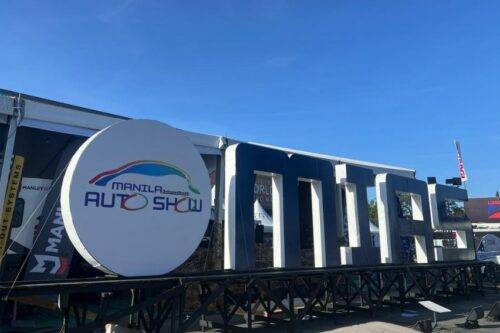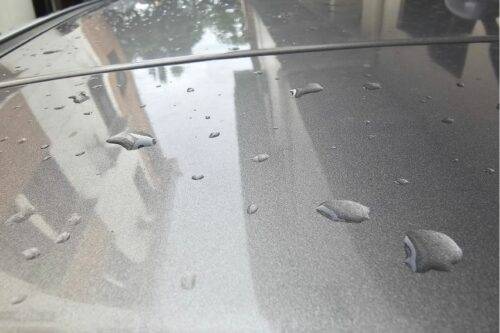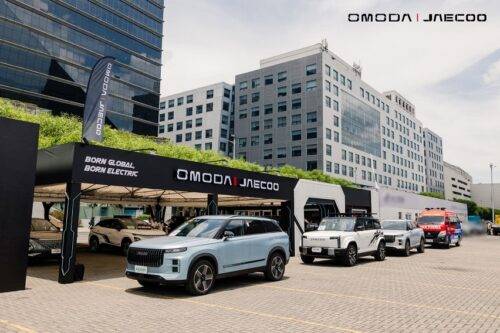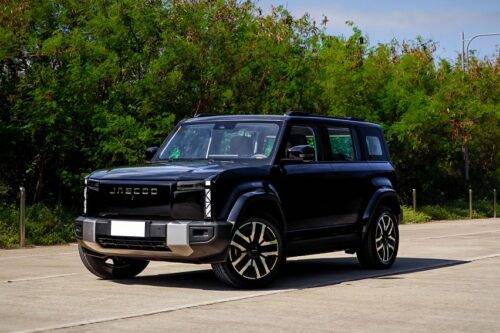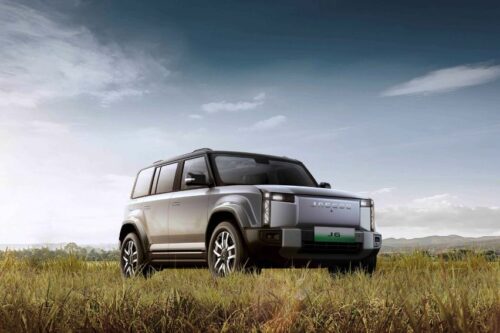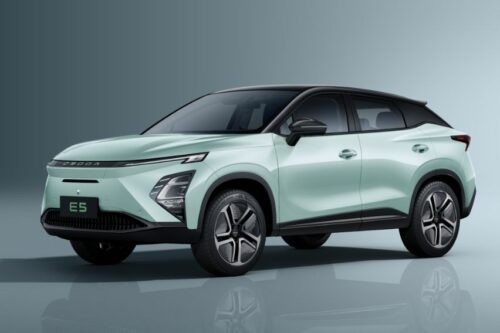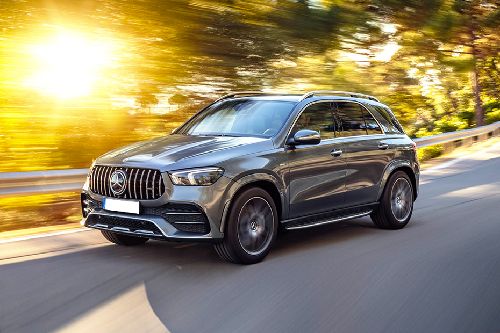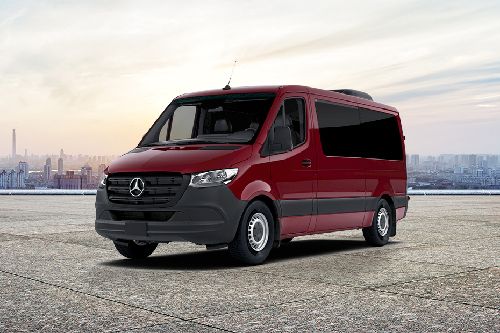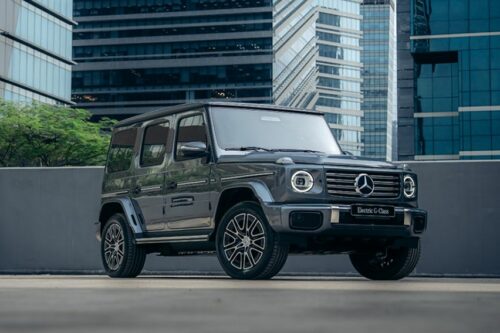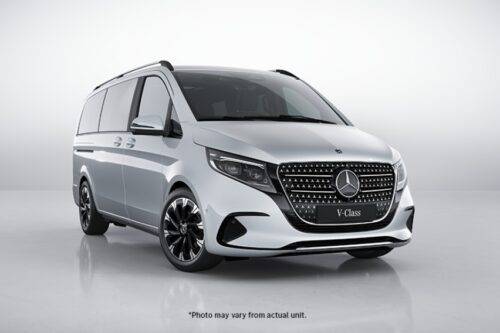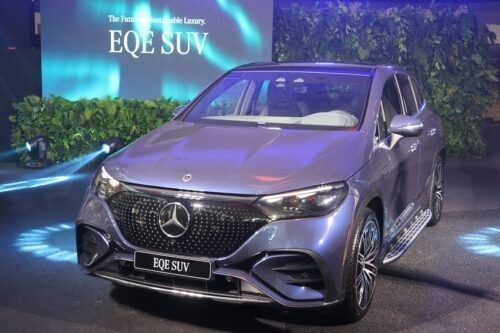Mercedes-Benz elevates EV range and efficiency with Vision EQXX
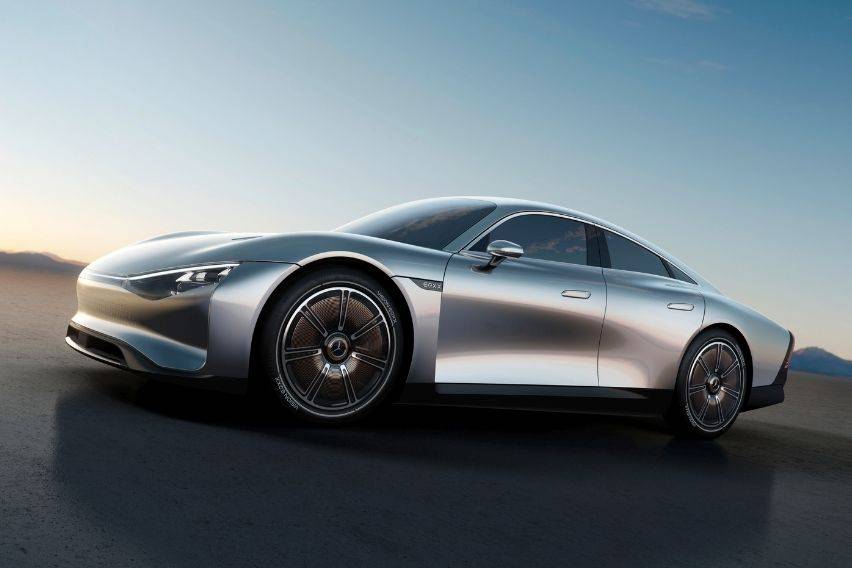
MANILA: Mercedes-Benz is taking electric range and efficiency to a whole new level with the Vision EQXX.
KEY TAKEAWAYS
What is the range of the Mercedes-Benz Vision EQXX?
The Mercedes-Benz Vision EQXX is capable of traveling more than 1,000 km on a single charge while consuming less than 10kWh per 100 km.What are included in the electric drive unit of the Mercedes-Benz Vision EQXX?
The Vision EQXX’s electric drive unit is a dedicated unit that includes the electric motor, transmission, and power electronics, all of which are made of a new generation of silicon carbides. The power electronics unit is based on the one in the upcoming Mercedes-AMG Project One hypercar.The Vision EQXX is the outcome of a mission Mercedes-Benz has set to break through technological limits and raise energy efficiency to new heights. It highlights the benefits that can be achieved by starting from the ground up and by reworking the fundamentals. This includes advancements in all aspects of the vehicle’s cutting-edge electric drivetrain, as well as the utilization of lightweight engineering and eco-friendly materials. Vision EXQQ allows the carmaker to explore new boundaries of efficiency with a barrage of innovative efficiency solutions, including smart software.
In a statement, Daimler AG and Mercedes-Benz AG Board of Management Chairman Ola Kallenius said, “The Mercedes-Benz Vision EQXX is how we imagine the future of electric cars. Just one-and-a-half years ago, we started this project leading to the most efficient Mercedes-Benz ever built – with an outstanding energy consumption of less than 10 kWh per 100 km. It has a range of more than 1,000 km on a single charge using a battery that would fit even into a compact vehicle. The Vision EQXX is an advanced car in so many dimensions — and it even looks stunning and futuristic. With that, it underlines where our entire company is headed: We will build the world’s most desirable electric cars.”
There is a reason why road trips have been a cultural icon for at least 70 years, telling stories from the highway in books, movies, and music. The road trip embodies freedom, independence, the spirit of the vehicle, and the passing world. Exploration, discovery, and delight in the world beyond the horizon are all part of what it means to be human. It is the pioneering spirit that brings together and the determination to make it happen.
The journey to electric mobility is said to be like a road trip; it is exciting and difficult, and it is uncertain as it is certain. The Mercedes-Benz EXQQ is a vehicle built for long journeys. It responds to the increasing demands of a modern generation of customers. This software-defined research prototype, which is part of a far-reaching technology program, was designed by people with the imagination, intellect, and desire to provide one of the world’s most efficient cars. They achieved so by combining cutting-edge digital technology with the versatility of a startup and the speed of Formula 1.
The result is an efficiency marvel that, based on internal digital simulations in real-world traffic conditions, will be capable of traveling more than 1,000 km on a single charge while consuming less than 10 kWh per 100 km.

Mercedes-Benz has created a software-driven electric vehicle that reimagines the road trip for the electric era. At the same time, it offers a forward-thinking interpretation of its values of modern luxury and Sensual Purity. Rather than just expanding the battery’s capacity, the cross-functional team concentrated on improving long-distance efficiency. They went all out in terms of drivetrain efficiency, energy density, aerodynamics, and lightweight design.
“The technology program behind the Vision EQXX will define and enable future Mercedes-Benz models and features. As a halo car, the Vision EQXX firmly establishes Mercedes-Benz as the brand that pairs luxury with technology in the automotive world and beyond. And the way we developed it is as revolutionary as the vehicle itself. VISION EQXX has seen the best minds from our R&D centers work together with engineers from our Formula 1 and Formula E programs. They are proving that innovations from motorsport — where powertrains are already highly electrified — have immediate relevance for road car development. We are challenging current development processes with innovative spirit and outside-the-box thinking. This truly is the way forward,” Mercedes-Benz Development and Procurement Chief Technology Officer Markus Schafer stated.
The Vision EQXX is a vision for electric vehicle technology that is both innovative and inspiring while remaining entirely realistic. Aside from its groundbreaking energy efficiency, it provides meaningful answers to primary issues. For example, using sustainable materials significantly reduces the carbon footprint. Its UI/UX includes a revolutionary one-piece display that covers the entire width of the vehicle and comes to life with responsive graphics. Other features of the UI/UX help the car and the driver unite as they use technology that replicates the human brain’s functions. The software-led development method that brought it to the market is changing the way electric vehicles are built.
This vehicle is the result of an ongoing project that is laying the groundwork for the future of automotive engineering. Many of its features and advancements, such as the next generation of the MMA (Mercedes-Benz Modular Architecture) for compact and medium-sized cars, are currently in the works.
Efficiency means getting more with less. With a combination of innovative technology and exceptional teamwork, the Vision EQXX is packed with efficiency upgrades that push the edge. More vehicles were delivered in less time, thanks to a slew of digital technologies and a software-driven approach.
With skilled engineering and Formula 1 concepts, Mercedes-Benz’ battery chemists crammed the energy of the EQS into the dimensions of a compact car. The battery pack in the Vision EQXX holds around 100 kWh of energy while taking up half the space and being 30% lighter than the existing benchmark pack in the EQS.
Mercedes-Benz engineers also collaborated with the world’s fastest race lab, High Performance Powertrains (HPP), and Mercedes-Benz Grand Prix (MGP) to develop a highly efficient and compact electric drivetrain as well as a lightweight battery case.
Engineers also applied advanced digital tools to cut weight and waste by reducing excess material with the use of 3D printing. Ultra-low-rolling-resistance tires with optimal aerodynamic geometry were also paired with lightweight magnesium wheels for extended range. Lightweight brake discs made from aluminum alloy also contribute to weight reduction.
Mercedes-Benz has always aimed for efficiency in its vehicles, and has made significant technological advancements throughout the years. Consistent upgrades in fuel consumption, comfort, and convenience have benefited customers. The imperatives of electric mobility and sustainability, on the other hand, have modified the framework for efficiency.
The most common measure of vehicle efficiency is fuel consumption. This is expressed in various ways — liters per 100 km, miles per gallon, or km per liter. They all connect units of fuel to units of distance, regardless of convention. In this regard, electric mobility is no different.
By making efficiency the new currency, Mercedes-Benz has created a single denominator for assessing technical improvement across the board, beyond fuel efficiency alone. It also means more tangible luxury and convenience with less impact on the environment, as well as more electric mobility with less waste.
The Vision EQXX proves that all of this is within reach. Mercedes-Benz customers get a clear picture of what premium efficiency looks and feels like in the electric and digital era.
“The XX suffix augments the Mercedes-Benz brand with the X-factor of electric mobility that thinks beyond limitations and an agile, X-divisional collaborative development approach. This enhances the breadth and depth of development skills within Mercedes-Benz AG with highly advanced digital tools as well as industry-leading expertise from a diverse array of partner companies, start- ups and institutions around the world,” Schafer added.
The efficiency engineering in every detail contributes to the Vision EQXX’s outstanding energy consumption and real-world range.
“Electric range sounds easy but is a complex technical challenge. The easiest way is to put a bigger battery in the car. However, this leads to diminishing returns due to size and weight. This is definitely not the smartest route and it’s also not the best use of scarce resources. With the Vision EQXX, we're presenting the results of an extraordinary challenge: we pushed efficiency to a totally new level. And we explored new ways to increase the range of an electric car,” Mercedes-Benz Vice President for Vehicle Engineering and Overall Vehicle Functions Joerg Bartels stated.
In just 18 months, this project moved from white paper to completed car. It drew talent from across the world into a cross-functional, multi-disciplinary team. They used cutting-edge technologies and ideas to design sophisticated, high-efficiency solutions with real-world potential.
With an output of around 150 kW, the Vision EQXX’s highly efficient electric drivetrain offers the power and stamina backing this remarkable long-distance runner. It is a work of engineering art in its own right. The team set out to design an electric drivetrain with a world-beating combination of efficiency, energy density, and lightweight engineering after being given a very clear and specific set of goals.
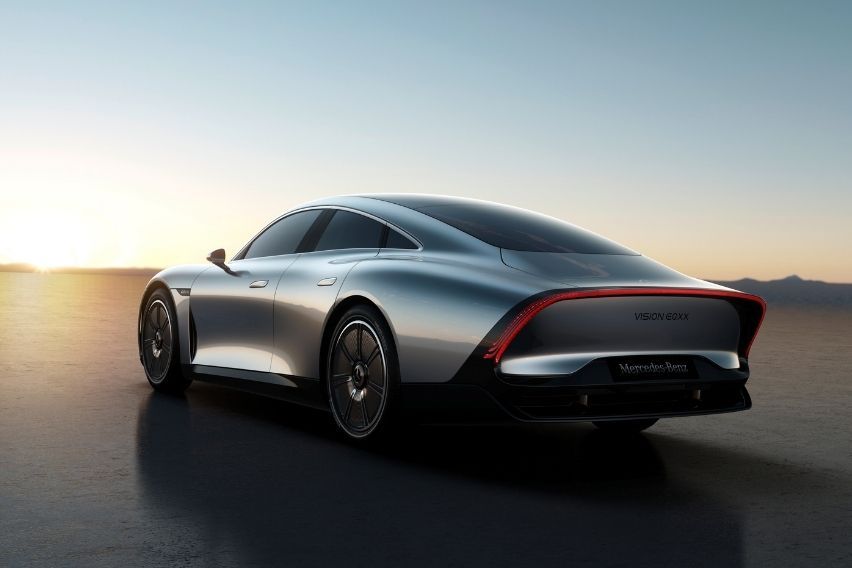
The Formula 1 experts at Mercedes-AMG HPP in Brixworth, United Kingdom believe that every kilojoule of energy counts. Mercedes-Benz R&D worked closely with them to rebuild a drivetrain and reduce system losses.
“One of the best ways to improve efficiency is to reduce losses. We worked on every part of the system to reduce energy consumption and losses through system design, material selection, lubrication and heat management. And our fantastic simulation tools helped us find out quickly what works and what doesn’t,” Mercedes-Benz Electric Drive System Chief Engineer Eva Greiner said.
The Vision EQXX’s electric drive unit is a dedicated unit that includes the electric motor, transmission, and power electronics, all of which are made of a new generation of silicon carbides. The power electronics unit is based on the one in the upcoming Mercedes-AMG Project One hypercar.
Instead of just increasing the size of the battery, Mercedes-Benz and the HPP team created a completely new battery pack for the Vision EQXX, with a phenomenal energy density of nearly 400 Wh/l. This benchmark figure allowed a battery pack with just less than 100 kWh of usable energy to fit within the Vision EQXX’s compact dimensions.
“In effect, we fitted the energy of the EQS into the vehicle dimensions of a compact car. The battery has almost the same amount of energy but is half the size and 30% lighter. The battery management system and power electronics have been designed with an absolute focus on reducing losses. In achieving this efficiency milestone, we learnt a lot that will flow into future development programs,” HPP Advanced Technology Director Adam Allsopp stated.
Significant advancement in the chemistry of the anodes has resulted in a substantial rise in energy density. They can hold more energy than frequently used anodes due to their high silicon content and innovative composition. The high level of integration in the battery pack is another feature that contributed to the remarkable energy density. Mercedes-Benz R&D and HPP collaborated on this platform, which provided more room for cells and helped lower down overall weight. The OneBox, a separate compartment for electrical and electronic (EE) components, also made more room for cells and provided additional benefits for installation and removal. The OneBox also includes unique safety devices that operate at lower energy consumption than the similar component in a production electric vehicle.
The battery development team, tasked with pushing the boundaries of technical feasibility on all levels, opted to experiment with an exceptionally high voltage. Increasing the voltage to over 900 volts proved to be a very beneficial research tool for power electronics development. The team was able to collect a significant amount of useful information, and they are now evaluating the possible benefits and consequences for future series production.
Several other features of the battery design contribute to its high efficiency. Mercedes-AMG HPP and its chassis partners at Mercedes-Grand Prix, for instance, collaborated on the lightweight lid. The id is a made of a one-of-a-kind, eco-friendly composite material created from sugar cane waste and strengthened with carbon fiber, similar to the one used in Formula 1. The battery also has active cell balancing, which means the energy is drawn evenly from the cells while the car is in motion, effectively increasing its endurance. The battery, including the OneBox, weighs around 495 kg in total.
The Vision EQXX is equipped with an innovative thermal-management system. It maintains thermal energy while significantly reducing cooling drag. Both contribute to a high level of efficiency.
For the Vision EQXX, the Mercedes-Benz "cooling-on-demand" concept has been further improved, not merely for optimal cooling depending on the current condition. The electric drive unit's excellent efficiency means it produces minimal waste heat. This allowed the thermal management system to be compact and light. The electric drive unit maintains the most efficient temperature balance at the lowest energy cost, thanks to the carefully developed interaction of aero-shutters, coolant valves, and water pumps. In terms of technology, this system combines an innovative air-flow management system with a cooling plate.
The cooling plate is installed in the vehicle floor to take advantage of the air flowing along the underside of the Vision EQXX. This is the most aerodynamically efficient way of keeping the electric drive unit cool under normal conditions, giving the vehicle about 20 km of range in the most aerodynamic mode.
The cooling system only kicks in when the whether is hot or the driving style is "lively." When things heat up in front of the Vision EQXX, shutters that are normally closed open, sending extra cooling air along a series of air guides. The inlets for these air guides are smartly placed along the highest-pressure zone of the front bumper. The outlets, on the other hand, are located in low-pressure zones along the top of the bonnet.
The brilliance of this "cooling-on-demand" approach is that it only adds seven points to the drag coefficient when the shutters are open. A backup cooling fan kicks in if cooling is required while the car is at halt.
The Vision EQXX's innovative heat pump absorbs hear from the drive system as well as the ambient air outside the keep the cabin cozy. Its high efficiency provides a significant boost to battery range in colder climates.
This multi-source heat pump recovers waste heat from the drivetrain and takes heat from the ambient air through an external heat exchanger. This innovation, which was not available in older Mercedes-Benz heat pumps, extends the operating temperature range. This is very useful for heating up the cabin quickly and is especially effective at lower temperatures. It even exploits the "evaporator enthalpy" when dehumidifying moist ambient air to squeeze out every last calorie of heat. The latent energy released as heat when water vapor in the air changes from gas to water is referred to as enthalpy.
There are 117 solar cells on the roof that provide additional energy to the electric system which powers many of the ancillaries in the Vision EQXX. It was created in partnership with Europe's largest solar energy institute, the Fraunhofer Institute for Solar Energy Systems ISE. The increase in range comes as a result of lowering the energy drain on the high-voltage system. This can add up to 25 km of range to long-distance trips on a single day and under ideal conditions.
The solar energy is stored in a light lithium-ion-phosphate battery, which powers a climate blower, the lighting, infotainment system, and other auxiliary features. Mercedes-Benz and its partners are also aiming to charge the high-voltage system using solar power.
Aerodynamic drag can also have a huge impact on range. On a typical long-distance trip, a standard electric vehicle dedicates roughly two-thirds of its battery capacity to cutting its way through the air ahead that is why the Vision EQXX has an ultra-sleek and slippery drag coefficient of 0.17.
However, aerodynamics and design frequently have conflicting interests. “The Vision EQXX is a vision of the future that embodies the desire for the next level of luxury from Mercedes. As designers, we always think in terms of technology and aesthetics. The aerodynamics of the Vision EQXX embodies this fusion of tech and aesthetic for us as designers. In line with our philosophy of Sensual Purity, we created spectacular proportions that combine beauty with efficiency. The resulting body flow delivers revolutionary aerodynamics. The fact that the end result is as beautiful as it is bears testament to the skill of our design team working in close collaboration with the aerodynamics experts,” Daimler AG and Mercedes-Benz AG Chief Design Officer Gorden Wagener said.
The passive and active aerodynamic features of the Vision EQXX were meticulously integrated into the external form of the vehicle, and the astounding outcome was achieved in an impressively short timeframe. The interdisciplinary team employed advanced digital modeling techniques to arrive at a solution that decreases drag while maintaining the sensual purity of Mercedes-Benz design language and the practicality of a road car.
“It usually takes around a year to finalize the form. We had less than half of that for the Vision EQXX. Lean, agile processes and mature digital tools make collaborative work far easier, with faster decision-making and more nimble compromises. We also needed fewer models and less time in the wind tunnel,” Mercedes-Benz Aerodynamics Head Teddy Woll stated.
The Vision EQXX provides a new representation of efficiency in interior design, marking the birth of a new, super-purist design approach. The interior layout, in a break from traditional design, focuses on just a few parts and the stunning simplicity of lightweight design. This is demonstrated by the absence of complex geometries and the organic integration of lightweight components into the interior aesthetic, obviating the need for traditional trim elements.
Once the passenger steps inside the Vision EQXX, they will immediately feel nature’s impact, thanks to the wide use of lightweight, sustainable materials and organic-inspired design elements. The main premise is maximum comfort and design with the least amount of weight – and no animal-derived materials.
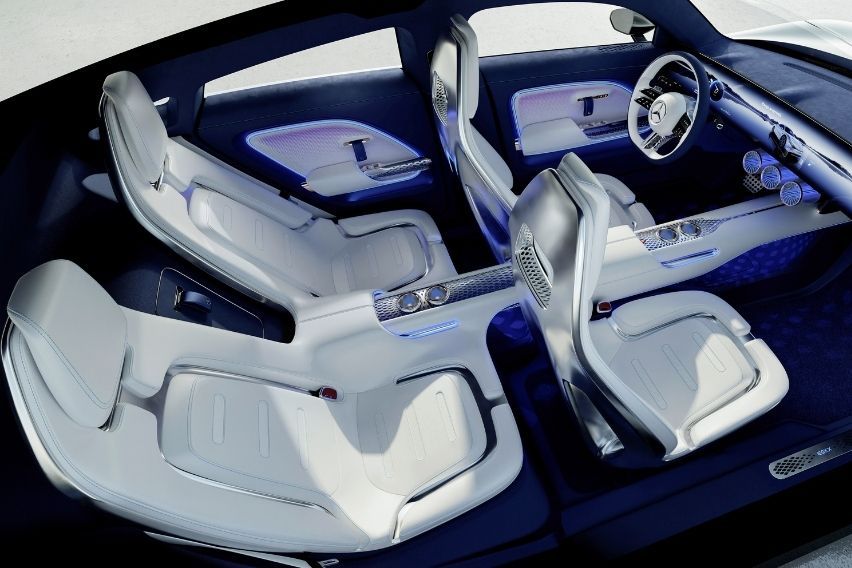
The interior is made up of a variety of cutting-edge materials acquired from start-ups all over the world. The door knobs, for example, are made of AMsilks’ Biosteel fiber. This high-strength, biotechnology-based, and certified-vegan silk-like fabric was created from the developer of biofabricated fiber. Its usage in the Vision EQXX is first in the automotive industry, combining groundbreaking science with true environmental integrity.
Another sustainable material that adorns the interior is Mylo, a vegan leather alternative derived from mycelium. It is certified bio-based, which indicates that it is manufactured primarily from renewable ingredients. This completely new material category, manufactured through biotechnology, is meant to be less harmful to the environment and is used for seat cushion details in the Vision EQXX.
The vehicle’s interior is also designed with Deserttex, a sustainable cactus-based biomaterial created from pulverized cactus fibers mixed with a sustainable bio-based polyurethane matrix. This animal-free leather alternative has an amazingly supple feel that is extremely soft to the touch. With a larger cactus percentage in future iterations, this material has the potential to reduce the environmental impact of traditional artificial leathers by half.
The carpets in the Vision EQXX are made entirely of bamboo fiber. This natural raw material, aside from being fast-growing and renewable, has a very luxurious appearance and feel. The sustainable, innovative, high-performance materials were chosen by Mercedes-Benz because they have the potential to replace all types of petroleum- and animal-based products that are currently used in automotive applications. Together, they indicate a path forward for luxury design that helps conserve resources and is in harmony with nature.
The Vision EQXX also makes considerable use of recycled waste materials, such as recycled PET bottles that are applied in a gleaming textile to enhance the floor area and door trim. Dinamica, produced from 38% recycled PET, was utilized to create a wrap-around impression connecting the upper edge of the one-piece screen with the doors and headliner. UBQ material, a sustainable plastic alternative derived from household and municipal landfill waste, is also used in the interior.
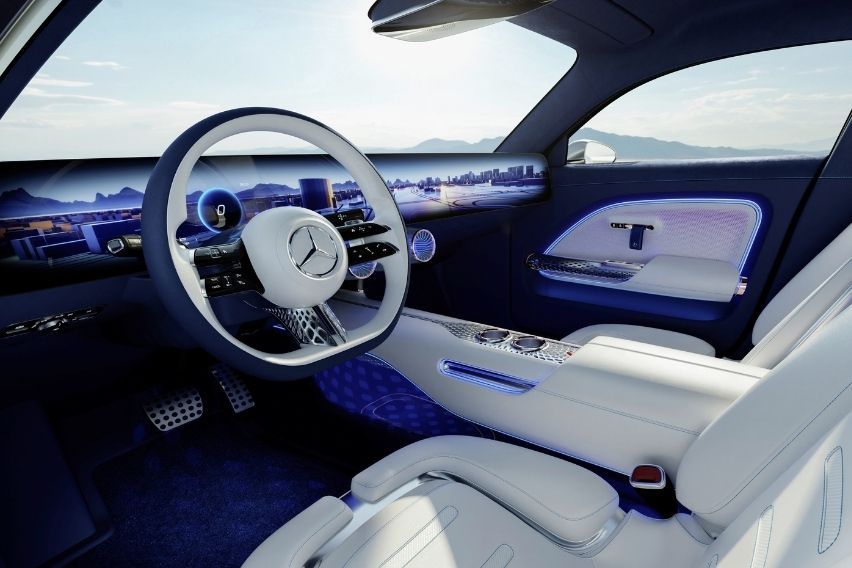
“Working with these innovative, sustainable materials to design the interior of the Vision EQXX was a hugely liberating and exhilarating experience. They open up completely new avenues of creativity, and the visual and tactile finishes are exquisite. The upscale feel of the interior through the use of ambient lighting as well as silver, rose-gold and gloss black accents is a highly progressive interpretation of modern luxury for the all-electric era,” Wagener added.
The clever use of sustainable advanced materials and methods inspired by nature is known as bionic engineering. It was made possible by a digital process called bionic mesh design. Mercedes-Benz has a long history of using bionic engineering approaches, dating back to the "bionic car" concept study from 2005.
Another major efficiency feature of the Vision EQXX that was inspired by nature is the way it thinks. This new form of information processing is known as neuromorphic computing. Spiking neural networks are run on the hardware. Information is coded in periodic spikes, and energy is only used when a spike happens, resulting in lower energy consumption by orders of magnitude.
In collaboration with US-based artificial intelligence experts BrainChip, Mercedes-Benz engineers created solutions based on BrainChip's Akida hardware and software. An example is the "Hey Mercedes" hot-word detection. It is five to 10 times for efficient than traditional voice control since it is based on neuromorphic principles.
Despite the fact that the neuromorphic computing is still in its early stages, systems like this will be available in a few years. They have the ability to drastically cut the amount of energy required to run the latest AI technology when used on a large scale throughout the vehicle.
With never-before-seen graphics and a highly adaptive design, the Vision EQXX demonstrates the possibilities of game-engine-powered interfaces. With real-time graphics, new digital worlds can be created, immediately responding to the driver's needs and integrating the real world into the car.
The Vision EQXX's user interface and experience ushers in a highly responsive, intelligent, and software-driven future. The first ever entirely seamless display in a Mercedes-Benz extends 47.5 in from one A-pillar to the other. It is stunning to look at, intuitive to work with, and in touch with the human mind. The lightweight mini-LED display works as a doorway connecting the driver and passengers with the car and the outside world, with an 8K resolution. The ethereal guide is a star-cloud avatar, evocative of the brand's namesake Mercedes Jelinek. She transforms into a luxurious experience by changing shape in response to the driver's wants and taking care of the guests. The system manages information so that the driver has access to what they need when they need it.
The Mercedes-Benz team collaborated with navigation experts NAVIS Automotive Systems, Inc. (NAVIS-AMS) to create the world's first real-time 3D navigation system on a screen this large. In the 3D city representation, it conducts seamless zoom and scroll features from satellite view down to a height of 10 meters. It provides the user with astoundingly clear, accurate, and intuitive route direction executed on the one-piece display.
Advanced software and digital processes are driving the road trip to electric mobility. The highways and byways are numerous and diverse, with fascinating sites and connections along the route.
It took a masterclass in software management to produce the Vision EQXX in double-quick time. The team made substantial use of open-source technology, which was supplemented with in-house parts. Continuous flow of end-to-end functions and early integration of solutions were ensured by agile working practices and monthly release planning.
The amount of digital development effort required to create and engineer the Vision EQXX is truly unprecedented. Physical mock-ups were no longer necessary, thanks to modern digital tools like augmented and virtual reality. It also allowed remote teams operating working in different parts of the world – from Germany to India and from United Kingdom to United States – to work on the same project at the same time. The time spent in the wind tunnel was reduced from more than 100 hours to just 32 hours because of this significant increase in digital power. It also meant that more than 300,000 km of virtual test driving was completed.
Software in the Loop (SiL) solutions was used extensively in the digital development. This shortened the commissioning phases with real hardware and allowed Mercedes-Benz to conduct large-scale tests early in the project. The team was able to install the drive unit, flash the software, and have the wheels rolling on the Vision EQXX in about two hours using this method. A combination of motorsport mindset and clever use of Mercedes-Benz’s testing tools enabled this incredibly nimble and efficient teamwork.
Many of the breakthroughs in the Vision EQXX could be swiftly converted for production applications, thanks to this very effective and efficient digital development approach.
Photos from Mercedes-Benz
Also read: Mercedes-Benz gets globally valid system approval for conditionally automated driving
Sell your car at the best price
 Verified and genuine buyers
Verified and genuine buyers
Mercedes-Benz Car Models
Trending & Fresh Updates
- Latest
- Popular
You might also be interested in
- News
- Featured Stories
Mercedes-Benz Featured Cars
- Latest
- Upcoming
- Popular
Latest Mercedes-Benz Car Videos on Zigwheels

Mercedes-Benz Car Articles From Carmudi
- journal

